LensCrafters 2011 Annual Report Download - page 203
Download and view the complete annual report
Please find page 203 of the 2011 LensCrafters annual report below. You can navigate through the pages in the report by either clicking on the pages listed below, or by using the keyword search tool below to find specific information within the annual report.-
 1
1 -
 2
2 -
 3
3 -
 4
4 -
 5
5 -
 6
6 -
 7
7 -
 8
8 -
 9
9 -
 10
10 -
 11
11 -
 12
12 -
 13
13 -
 14
14 -
 15
15 -
 16
16 -
 17
17 -
 18
18 -
 19
19 -
 20
20 -
 21
21 -
 22
22 -
 23
23 -
 24
24 -
 25
25 -
 26
26 -
 27
27 -
 28
28 -
 29
29 -
 30
30 -
 31
31 -
 32
32 -
 33
33 -
 34
34 -
 35
35 -
 36
36 -
 37
37 -
 38
38 -
 39
39 -
 40
40 -
 41
41 -
 42
42 -
 43
43 -
 44
44 -
 45
45 -
 46
46 -
 47
47 -
 48
48 -
 49
49 -
 50
50 -
 51
51 -
 52
52 -
 53
53 -
 54
54 -
 55
55 -
 56
56 -
 57
57 -
 58
58 -
 59
59 -
 60
60 -
 61
61 -
 62
62 -
 63
63 -
 64
64 -
 65
65 -
 66
66 -
 67
67 -
 68
68 -
 69
69 -
 70
70 -
 71
71 -
 72
72 -
 73
73 -
 74
74 -
 75
75 -
 76
76 -
 77
77 -
 78
78 -
 79
79 -
 80
80 -
 81
81 -
 82
82 -
 83
83 -
 84
84 -
 85
85 -
 86
86 -
 87
87 -
 88
88 -
 89
89 -
 90
90 -
 91
91 -
 92
92 -
 93
93 -
 94
94 -
 95
95 -
 96
96 -
 97
97 -
 98
98 -
 99
99 -
 100
100 -
 101
101 -
 102
102 -
 103
103 -
 104
104 -
 105
105 -
 106
106 -
 107
107 -
 108
108 -
 109
109 -
 110
110 -
 111
111 -
 112
112 -
 113
113 -
 114
114 -
 115
115 -
 116
116 -
 117
117 -
 118
118 -
 119
119 -
 120
120 -
 121
121 -
 122
122 -
 123
123 -
 124
124 -
 125
125 -
 126
126 -
 127
127 -
 128
128 -
 129
129 -
 130
130 -
 131
131 -
 132
132 -
 133
133 -
 134
134 -
 135
135 -
 136
136 -
 137
137 -
 138
138 -
 139
139 -
 140
140 -
 141
141 -
 142
142 -
 143
143 -
 144
144 -
 145
145 -
 146
146 -
 147
147 -
 148
148 -
 149
149 -
 150
150 -
 151
151 -
 152
152 -
 153
153 -
 154
154 -
 155
155 -
 156
156 -
 157
157 -
 158
158 -
 159
159 -
 160
160 -
 161
161 -
 162
162 -
 163
163 -
 164
164 -
 165
165 -
 166
166 -
 167
167 -
 168
168 -
 169
169 -
 170
170 -
 171
171 -
 172
172 -
 173
173 -
 174
174 -
 175
175 -
 176
176 -
 177
177 -
 178
178 -
 179
179 -
 180
180 -
 181
181 -
 182
182 -
 183
183 -
 184
184 -
 185
185 -
 186
186 -
 187
187 -
 188
188 -
 189
189 -
 190
190 -
 191
191 -
 192
192 -
 193
193 -
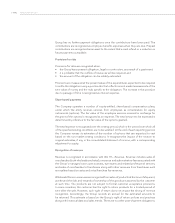 194
194 -
 195
195 -
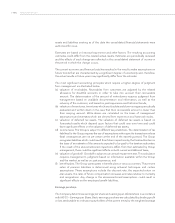 196
196 -
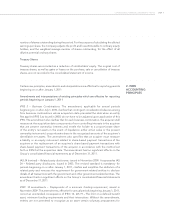 197
197 -
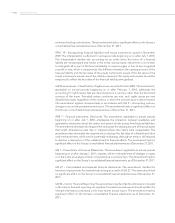 198
198 -
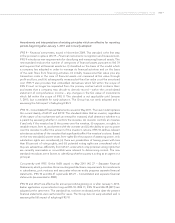 199
199 -
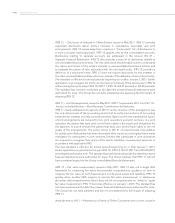 200
200 -
 201
201 -
 202
202 -
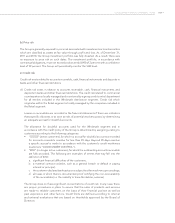 203
203 -
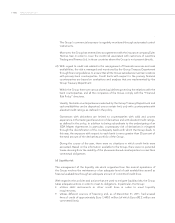 204
204 -
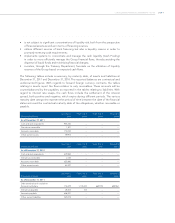 205
205 -
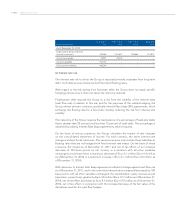 206
206 -
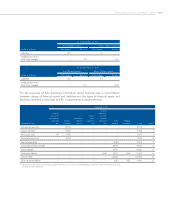 207
207 -
 208
208 -
 209
209 -
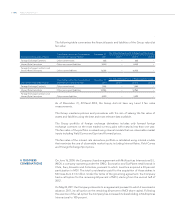 210
210 -
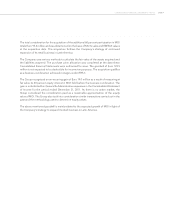 211
211 -
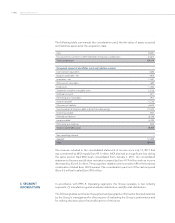 212
212 -
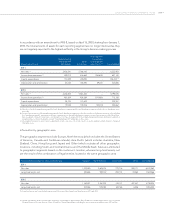 213
213 -
 214
214 -
 215
215 -
 216
216 -
 217
217 -
 218
218 -
 219
219 -
 220
220 -
 221
221 -
 222
222 -
 223
223 -
 224
224 -
 225
225 -
 226
226 -
 227
227 -
 228
228 -
 229
229 -
 230
230 -
 231
231 -
 232
232 -
 233
233 -
 234
234 -
 235
235 -
 236
236 -
 237
237 -
 238
238 -
 239
239 -
 240
240 -
 241
241 -
 242
242 -
 243
243 -
 244
244 -
 245
245 -
 246
246 -
 247
247 -
 248
248 -
 249
249 -
 250
250 -
 251
251 -
 252
252 -
 253
253 -
 254
254 -
 255
255 -
 256
256 -
 257
257 -
 258
258 -
 259
259 -
 260
260 -
 261
261 -
 262
262 -
 263
263 -
 264
264 -
 265
265 -
 266
266 -
 267
267 -
 268
268 -
 269
269 -
 270
270 -
 271
271 -
 272
272 -
 273
273 -
 274
274
 |
 |

| 127 >CONSOLIDATED FINANCIAL STATEMENTS - NOTES
(b) Price risk
The Group is generally exposed to price risk associated with investments in bond securities
which are classified as assets at fair value through profit and loss. As of December 31,
2011 and 2010, the Group investment portfolio was fully divested. As a result, there was
no exposure to price risk on such dates. The investment portfolio, in accordance with
contractual obligations, must not exceed a value at risk (VAR) of 2 percent with a confidence
level of 99 percent. The Group will periodically monitor the VAR level.
(c) Credit risk
Credit risk exists related to accounts receivable, cash, financial instruments and deposits in
banks and other financial institutions.
c1) Credit risk exists in relation to accounts receivable, cash, financial instruments and
deposits in banks and other financial institutions. The credit risk related to commercial
counterparties is locally managed and monitored by a group credit control department
for all entities included in the Wholesale distribution segment. Credit risk which
originates within the Retail segment is locally managed by the companies included in
the Retail segment.
Losses on receivables are recorded in the financial statements if there are indicators
that a specific risk exists or as soon as risks of potential insolvency arise, by determining
an adequate accrual for doubtful accounts.
The allowance for doubtful accounts used for the Wholesale segment and in
accordance with the credit policy of the Group is determined by assigning a rating to
customers according to the following categories:
• “GOOD” (active customers), for which no accrual for doubtful accounts is recorded
for accounts receivable overdue for less than 90 days. Beyond 90 days overdue
a specific accrual is made in accordance with the customer’s credit worthiness
(customers “GOOD UNDER CONTROL”);
• “RISK” (no longer active customers), for which the outstanding accounts receivable
are fully provided. The following are examples of events that may fall into the
definition of RISK:
a. significant financial difficulties of the customers;
b. a material contract violation, such as a general breach or default in paying
interest or principal;
c. the customer declares bankruptcy or is subject to other insolvency proceedings;
d. all cases in which there is documented proof certifying the non-recoverability
of the receivables (i.e. the inability to trace the debtor, seizures).
The Group does not have significant concentrations of credit risk. In any case, there
are proper procedures in place to ensure that the sales of products and services
are made to reliable customers on the basis of their financial position as well as
past experience and other factors. Credit limits are defined according to internal
and external evaluations that are based on thresholds approved by the Board of
Directors.
